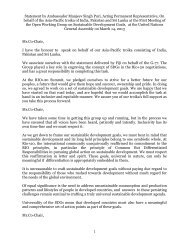STATE OF THE WORLD'S CITIES 2012/2013 Prosperity
STATE OF THE WORLD'S CITIES 2012/2013 Prosperity
STATE OF THE WORLD'S CITIES 2012/2013 Prosperity
You also want an ePaper? Increase the reach of your titles
YUMPU automatically turns print PDFs into web optimized ePapers that Google loves.
As suggested earlier, it is in the power of well-calibrated<br />
planning rules and interventions to help embed the five<br />
dimensions of shared prosperity across the length and<br />
breadth of any urban jurisdiction.<br />
Making more functional the city, preserving access to the<br />
commons and producing useful public goods can be achieved<br />
through five different, sustainable types of intervention:<br />
Increase population density to sustainable levels: More<br />
intense land occupation and activities result in sustainable<br />
population densities which contain or reduce urban sprawl<br />
and depletion of limited resources. Greater proximity will, in<br />
turn, facilitate supply and distribution of goods and services.<br />
An efficient layout (together with adequate land legislation<br />
and policies) can reduce the cost of infrastructure. On top<br />
of suburban densification and sprawl remediation, land use<br />
can be intensified through area redevelopment, planning for<br />
new areas with higher densities, ‘brownfield’ development<br />
(i.e., decontaminating and developing land previously used<br />
for industrial or certain commercial purposes), building<br />
conversions, and transit-oriented developments.<br />
Encourage social<br />
diversity and mixed<br />
land-use: Land planning<br />
can bring about<br />
clusters of land uses in<br />
appropriate locations,<br />
with the flexibility<br />
needed to adapt to the<br />
changing requirements<br />
of the population. Urban<br />
planning must facilitate the<br />
deployment of common<br />
spaces that allow encounter,<br />
interaction and dialogue<br />
between different socialethnic<br />
groups. Moreover,<br />
physical urban structure<br />
facilitates communication<br />
between economic activities<br />
and residential areas,<br />
providing employment<br />
and services on a<br />
neighbourhood scale, with<br />
positive repercussions on<br />
productivity, infrastructure,<br />
equity, quality of life and<br />
the environment. Urban<br />
design strengthens and<br />
Innovating to Support the Transition to the City of the 21st Century<br />
113<br />
POLICy<br />
Acting at the space level (form and function of the<br />
city), urban planning can steer the overall functioning<br />
of the ‘wheel’, modulating each dimension of prosperity and<br />
ensuring synergies between them in order to maintain overall<br />
balance and sustainable growth, regardless of city size or level of<br />
development.<br />
empowers structures through infrastructure and facilities<br />
(education, healthcare, commerce, manufacturing and<br />
culture/entertainment).<br />
Devise multimodal mobility strategies: Urban planning<br />
can provide alternatives to the current widespread<br />
dependency on private motorised vehicles and reinforce<br />
London, UK: the Olympic Park for the <strong>2012</strong> Olympics Stratford<br />
was constructed on brownfield sites in an area of East London<br />
that had been previously rundown. After the Olympic games, the<br />
site is to be used to accommodate low cost housing as well as<br />
leisure activities.<br />
© <strong>2012</strong> Alistair Laming/fotoLIBRA.com




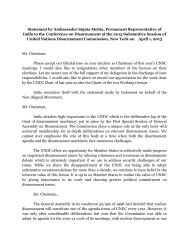
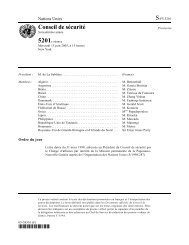
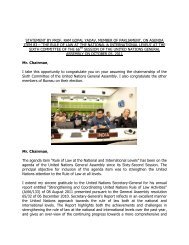
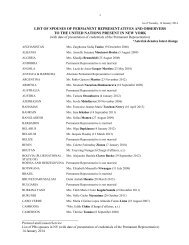
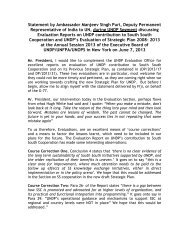
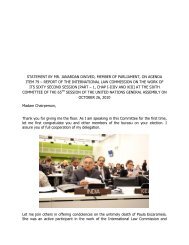
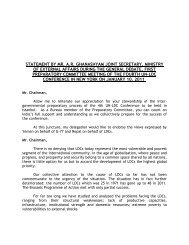
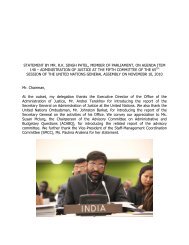

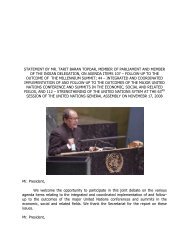
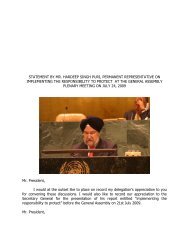
![1 statement by dr.[mrs] kakoli ghosh dastidar - Member States Portal](https://img.yumpu.com/27526598/1/190x245/1-statement-by-drmrs-kakoli-ghosh-dastidar-member-states-portal.jpg?quality=85)
